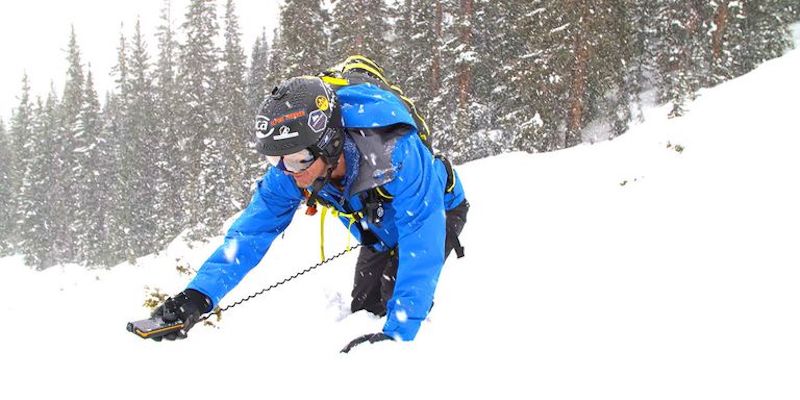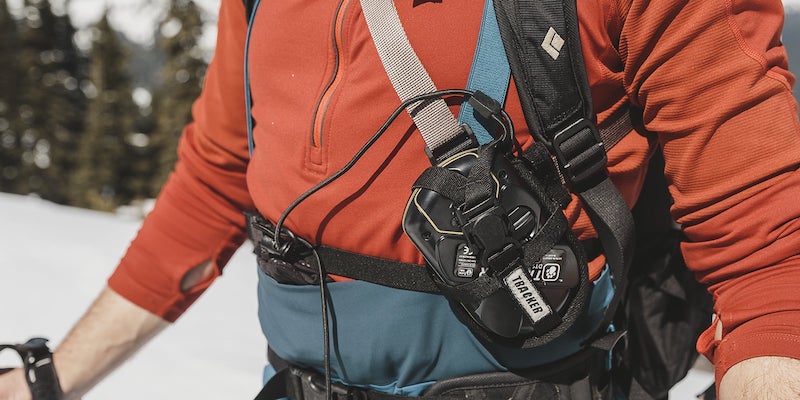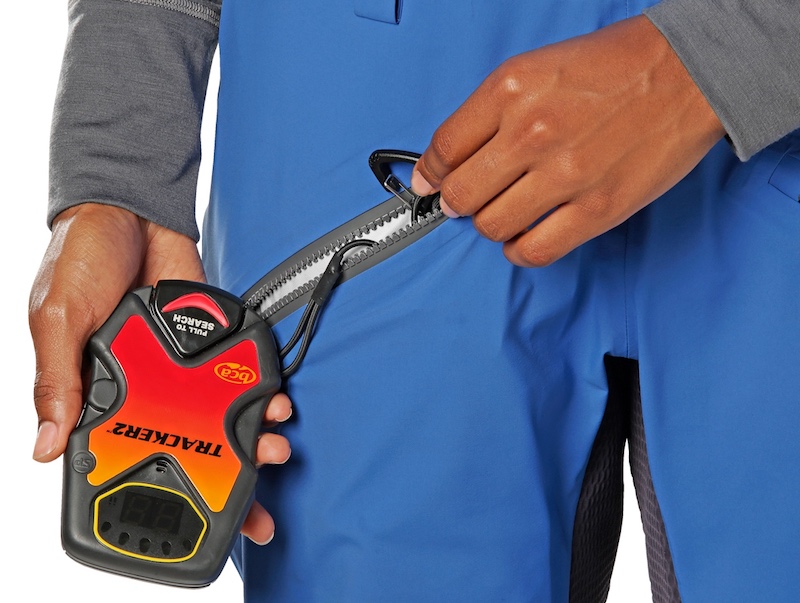
An avalanche beacon is mandatory equipment when you head into the backcountry, sidecountry, or even into the high-gnar zones at some resorts. Practice using it and get good. Make sure your friends are proficient too. They’re the ones that are going to save your butt when you get buried. Turn it on at the car and off at the bar.
The two most popular places where people carry beacons are the manufacturer-supplied chest harness and the pants pocket. Is one better than the other? More importantly, is one safer than the other? Does it really matter bro? Let’s have a look.
Wearing the beacon in the chest harness is the preferred location for most people that I see. It’s secure, warm, protected, and in a place that doesn’t have a lot else going on. It’s how I carry my beacon, but it has its problems.

The beacon harness can make layering a pain. Ideally, your beacon is always under one of your outermost layers, so you don’t have to dig for it in an emergency. Of course, who doesn’t add or remove layers on a long day in the mountains? At some point, your beacon is going to get buried by clothing, exposed, or constantly being taken on and off, none of which are ideal. The harness shoulder strap also chafes my neck, and my backpack straps resting on top of the harness are a source of discomfort.
A big problem I have is not putting my beacon back into the harness after I’ve completed my search. When every second counts, it’s too easy to drop the beacon and get out the probe/shovel. Now it’s dangling out the bottom of my coat, in the snow, and in the way. I’ve temporarily stashed it in my pants pocket quite a few times while practicing.
That’s the huge plus for carrying your beacon in your pants – it’s always right there, one zipper away, easy in, easy out. There’s no harness to mess with, no worrying about layering, and in the case of a real-life rescue, it’s the fastest location to access when the time is critical. The pants pocket also might keep your beacon further away from other electronics, like your phone or radio, depending on how you carry those. Just make sure to properly secure your beacon to your pants with cord or lanyard.

The downsides? Arguably your beacon is now in a more exposed location to get damaged, wet, or potentially torn off your body (sewn-on pockets getting torn off does happen). Make sure your pocket is internal, not sewn or welded to the outside. Some have also noted that when your beacon permanently lives in your pants, it can be too easy not to turn it on and off or even forget it at home. That’s not good. For me, I don’t like the extra weight bouncing around on my leg.
The best argument I’ve heard for harness over pants is that the harness keeps the beacon closer to your airway. An IFMGA guide once asked me, “Do you want someone digging for your thigh or your chest?” It would depend highly on the burial position but could be a big deal for a tall guy like myself. I don’t know if there’s any hard science to back that up, but it at least makes some practical sense.
In the end, a beacon is a tool, and you need to be comfortable using it. Both locations have their issues and advantages, pick the one you like and go with it. I’ve met plenty of ski guides who will argue for either side. Backpacks have been known to come off in avalanches, sometimes taking jackets with them, so neither one of those is a recommended location for your beacon.
With winter upon us, now is a good time to get out all your backcountry equipment, change batteries and make sure everything is in working order.
How about a test to see if cell phone in airplane mode messes with the beacons signal. Informal living room test says no interference but it was anything from scientific.